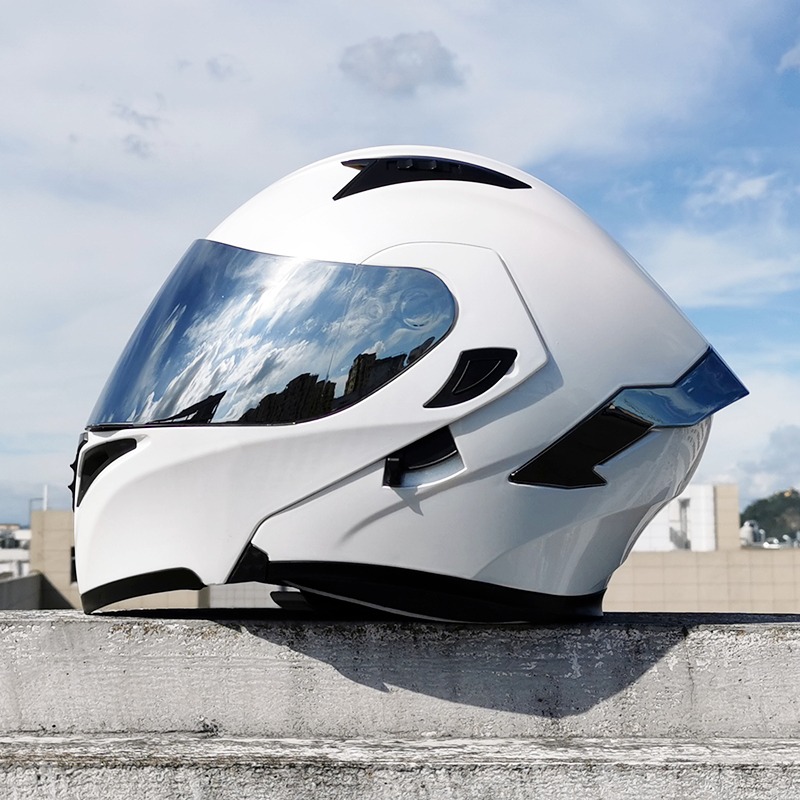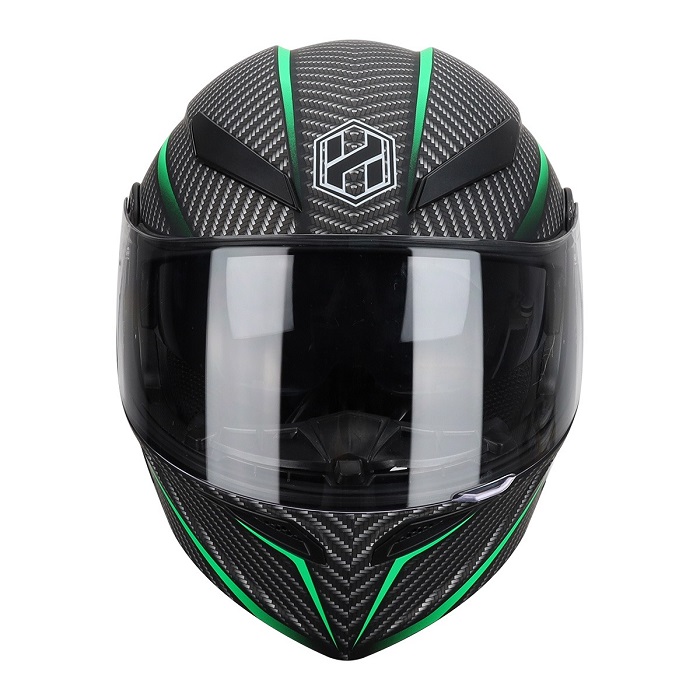Mar 26, 2025
Understanding How Long Motorcycle Helmet Last: A Guide
Introduction to Helmet Lifespan
How long motorcycle helmet last? Understanding the lifespan of a motorcycle helmet is crucial for ensuring safety on the road. A helmet’s main function is to protect your head during impact. However, over time, factors like exposure to the sun, the material’s natural decay, and wear from regular use may degrade its protective abilities. Though there is no exact expiration date, knowing when to replace your helmet is a key aspect of motorcycle safety. This guide will provide insights into what affects a motorcycle helmet’s longevity and how to identify the signs that it’s time for a replacement. Whether you’re a casual rider or a daily commuter, staying informed about your helmet’s condition is vital for your well-being. Remember, what might look like a minor issue could compromise the helmet’s performance when you need it most. Let’s explore the factors that influence how long motorcycle helmets last and how you can maximize their lifespan through proper care.
Factors That Affect Motorcycle Helmet Longevity
Motorcycle helmets don’t last forever. Several factors can reduce their lifespan. Knowing these can help you make better decisions on helmet care and replacement.
Material Degradation
Helmets are sturdy, but age weakens them. The materials, like polycarbonate or fiberglass, break down over time. The cushioning inside the helmet also ages. It becomes less effective at absorbing shocks. This process can speed up with exposure to UV rays and chemicals.
Wear and Tear From Regular Use
Daily use of your helmet naturally wears it down. The lining gets compressed, and the straps may stretch. Buckles can become less reliable. Even small knocks and drops add to the wear and tear, harming the helmet’s integrity.
Impact on Helmet from Accidents
Any strong impact can damage a helmet, even if you can’t see it. A small crack can grow over time, making the helmet unsafe. After a crash, it’s crucial to check the helmet. Often, it’s safest to replace it, even if it looks fine.
Signs It’s Time to Replace Your Helmet

Recognizing when to replace your motorcycle helmet is vital for your safety. Look for these signs.
Visual Inspection Points
Begin with a visual check. Over time, signs of wear and material fatigue may become evident. Firstly, examine the outer shell for any cracks, dents, or scratches. These can suggest deeper damage. Next, inspect the straps and buckles for fraying or malfunction. A secure fit is crucial and compromised straps can put you at risk. Also, look inside the helmet at the padding and lining. If you observe compression, tears, or disintegration, it’s time for a new helmet. Regular checks can help catch issues early on.
Performance-Based Indicators
Besides visual cues, consider how the helmet performs. If the helmet no longer fits snugly, this is a concern. A helmet that wobbles or slips can impair your vision and reaction in critical situations. You might also sense an increase in road noise or a decrease in comfort levels. These changes suggest the helmet’s interior structure is breaking down. In either case, these performance-based indicators signal a need for replacement. Remember, safety comes first. Trust your instinct—if something feels off, it’s better to be cautious and consider a new helmet.
The Role of Manufacturer Recommendations
Manufacturer guidelines are crucial when considering how long motorcycle helmets last. Most manufacturers suggest a replacement timeline for their helmets. This usually ranges from three to five years. But remember, this is a general recommendation. It may change based on how often you ride and the helmet’s exposure to elements.
Always check the manual that came with your helmet. It will have specific advice tailored to the helmet model. This can include care instructions, which can impact longevity. The guidelines also often cover the materials used and their expected wear patterns. If you’ve lost the manual, try looking on the manufacturer’s website. They might have digital copies or additional information.
Keep an eye on manufacturer recalls as well. Sometimes, they discover issues after a helmet goes to market. They will issue recalls to replace or fix these problems. Following their advice ensures you stay as safe as possible on the road.
Proper Helmet Care to Extend Lifespan

Taking good care of your motorcycle helmet can extend its life. Proper maintenance isn’t just about cleanliness. It’s about preserving the helmet’s materials and functionality. Follow these tips to keep your helmet in top shape, ensuring optimal protection whenever you ride.
Cleaning and Maintenance Tips
First, clean your helmet regularly. Use a mild soap and water for the shell. Avoid harsh chemicals that can damage its construction. For the interior, remove the pads and lining if they’re detachable. Hand-wash them in cool water and let them air dry. Avoid machine washing, as it may be too rough. Check for loose parts or damage during cleaning. Tighten any loose screws and replace worn-out parts right away. Lastly, keep the visor clean for a clear view. Use a microfiber cloth to prevent scratching.
Storage Do’s and Don’ts
How you store your helmet can impact how long it lasts. Do keep it in a cool, dry place away from direct sunlight. Heat and UV rays can degrade the helmet’s materials. Don’t hang your helmet on a hook by the chin strap. This can put stress on the strap and padding. Instead, place it on a flat surface or use a helmet stand. Avoid storing heavy items on top of your helmet. It can ruin the shape of the inner lining. Also, store your helmet away from oils or fumes. These can break down the materials, shortening your helmet’s lifespan.
By following these care guidelines, you can maximize how long your motorcycle helmet lasts. Regular cleaning, proper maintenance, and storing it right are key. Together, they keep your helmet reliable for every ride.
The Importance of Regular Helmet Replacement

Regular replacement of your motorcycle helmet is crucial for safety. Helmets have a limited lifespan. Over time, protection weakens. Factors like material degradation and daily wear reduce a helmet’s effectiveness. Also, after an accident, helmets must get checked or replaced. Even if there’s no visible damage, the impact may have weakened its structure.
Through use and exposure, a helmet’s components—such as the outer shell, padding, and straps—begin to wear down. These changes may not be apparent right away. But they can compromise the helmet’s ability to protect in a crash. That’s why sticking to the replacement timeline is so important.
Manufacturers generally advise replacing helmets every three to five years. This timeline assumes average use and proper care. If you ride more often or in harsh conditions, you might need to replace your helmet sooner. Always heed these guidelines. They are in place to keep you safe.
Remember, even with excellent care, no helmet can last forever. Materials age and technology improves. Staying updated with current helmet standards is also a reason to replace regularly. Newer models may offer better protection or features that enhance safety.
For your own safety, never ignore the signs of a helmet needing replacement. Protect your head with a helmet that’s in top condition. Make helmet checks a regular part of your ride routine. Stay proactive about your safety gear, and don’t risk riding with an outdated or damaged helmet.
Conclusion: Staying Safe with a Reliable Helmet
Choosing the right time to replace your motorcycle helmet is key to road safety. As we’ve discussed, helmets lose their protective power over time. Factors like material wear, daily use, and accident impacts can shorten a helmet’s life. Pay attention to manufacturer guidelines and your helmet’s condition to judge its remaining lifespan. Regular visual and performance checks will alert you when it’s time for a new one.
Keep your helmet clean, perform routine maintenance, and store it properly to extend its use. But remember, no amount of care can make a helmet last forever. Replacing it every three to five years is a general rule, but consider your riding habits and helmet exposure. If you’re on the road often, or if your helmet faces extreme conditions, replacement might need to be sooner. Trust the signs of aging and damage, and err on the side of caution.
A reliable helmet can save your life. It’s an investment in your safety. Take care of it, and it will take care of you. Make regular checks and replacements part of your safety routine. This way, you ensure every ride is as safe as possible. A helmet isn’t just gear; it’s a lifesaver. So when it’s time, choose a helmet that meets current safety standards. Your well-being on the road depends on it.
More Details